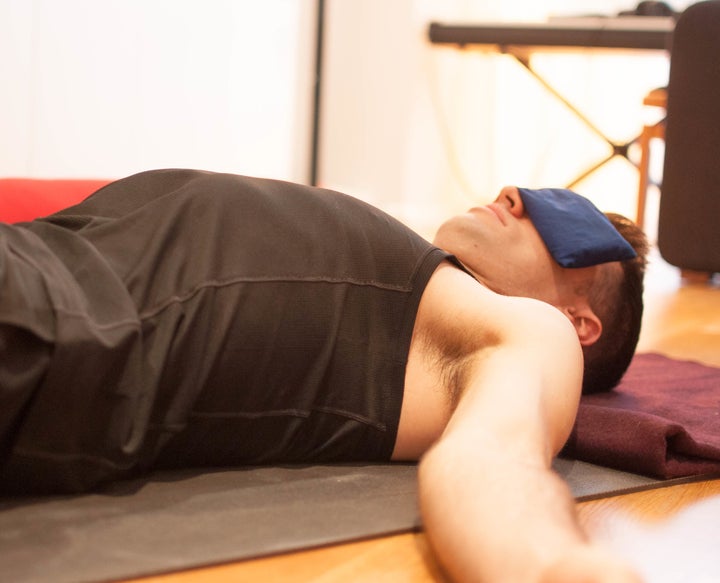Every day when I walk into the yoga studio, without fail there are more women than men. My studio tells me that current male representation is a paltry 20%. Men are missing, and wherever they are, they aren’t taking great care of themselves.
Suicide is the single biggest killer of men under 45 in the UK. Worldwide, we are reckoning with extreme abuses of male power and sexual objectification. Although not all of us are in crisis, none of us is immune. Healing can begin by confronting the conflicted relationships we have with own bodies dating back to the lessons of our fathers, coaches, and the deeply embedded history of masculine physical culture. Yoga, a discipline that pairs movement with mindfulness, can start the process of unwinding the unreasonable self-objectifying expectations of power, masculinity, and invulnerability we have been wedded to for far too long.
On teams and in locker rooms, from fathers and uncles, through words and images I was taught that my body was a tool to strengthen and perfect for the purposes of sport, sex, and emotional invulnerability. Like many, I was shamed and humiliated when told that I was too weak, too effeminate, or too fat to belong. If I could be lean, strong, and athletically proficient I could be a real man.
Movement is a requirement for health. But motivating factors for exercise are far more complicated than simply health and wellbeing. I know my gym bag doesn’t just carry trainers and kit but years of cultural indoctrination. When you lift weights, run, or think twice about what you eat, can you say you aren’t chasing some aspect of the masculine ideal?
Our bodies aren’t just objects we can push and prod to serve our purposes or meet societal expectations. When we begin to respect and truly care for our own bodies, it’s less likely we’ll treat the body of another with disrespect.
Yoga teaches that the body is far more than a sack of muscles to shape and sculpt. Sure, you’ll use strength, stretch, and occasionally go upside down, but along the way you learn to carefully observe, feel, and experience the body from the inside out. You learn self-care by regulating breath, exertion, and sensation in the face of challenge. You learn to soften and rest when needed. You learn that strength isn’t the only answer. You learn to feel and be with what has long lain buried and unexpressed. If this sounds a little wishy-washy to you, ask yourself if the alternative of a lifetime of strengthening and suppressing is really sustainable.

Yoga brought me back home to my body. A body I thought was only a source of disappointment is now a continual source of wonder and inquiry. I revel in the opportunity to be physical, move, and get out of my head. I lift weights and practise reformer Pilates without having to push myself too hard. Knowing I need to routinely burn off anxiety, I ensure I get my heart rate up a few times a week on a treadmill or ladder machine. Yoga developed my awareness to realise that I need to incorporate many types of physicality into my unique programme for emotional and physical wellbeing. As your practice and awareness grows, you will surely find your own combination.
Yoga is for everybody, but as men we can use it to help unwind some of our own gender-specific baggage. We can face down the inherited cultural expectations. We can face down the voices that tell us we need to be stronger, or fitter, or leaner and ask ‘why?’ We can learn to self-regulate emotion and sensation rather than building up suits of armour that we mistakenly believe will protect us.
But it’s not just about men. When you and I come together in rooms of women, who of course have their own tumultuous relationship with embodiment, we can breathe together, know each other more fully, and relate with compassion and kindness. I believe that power doesn’t come from individual strength, but from confronting and caring for our collective wounds. Power comes when we stand together.
This to me is yoga. Will you join me?